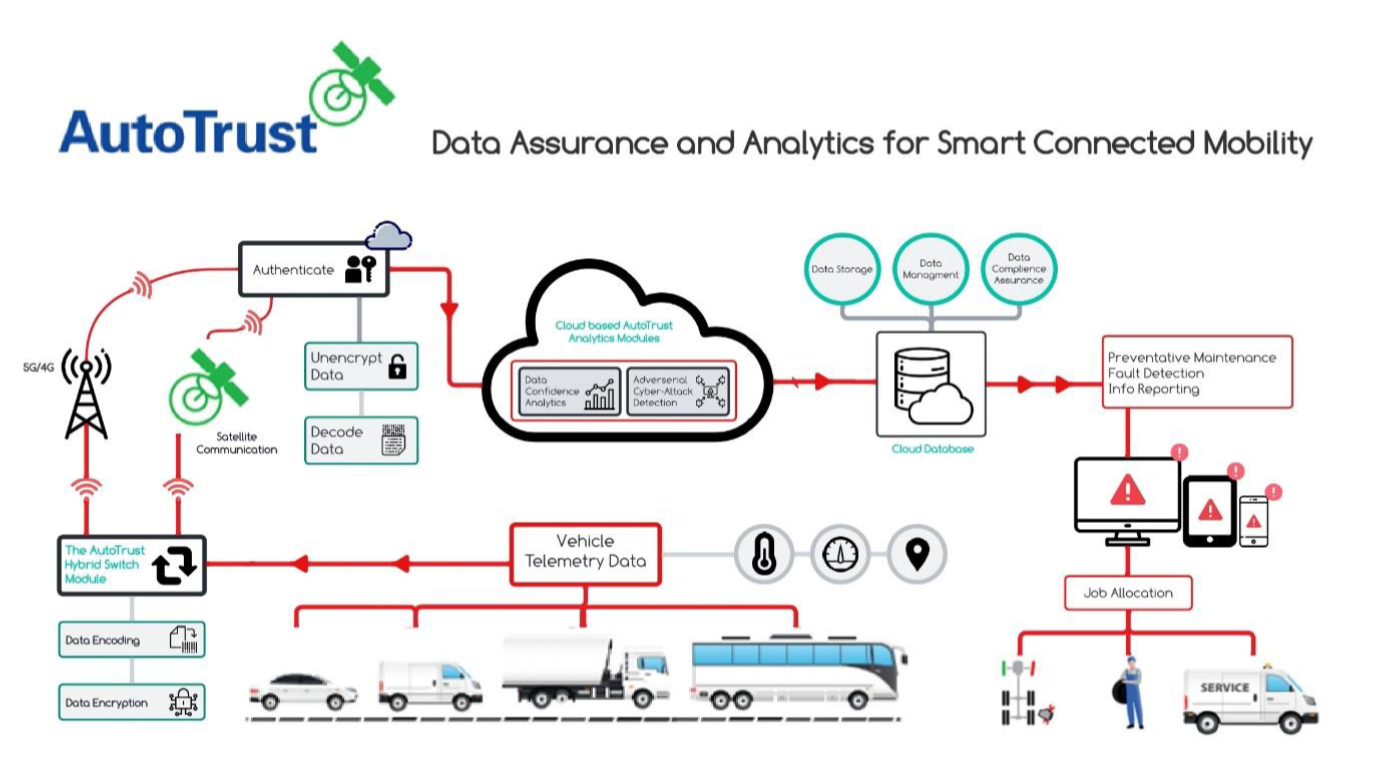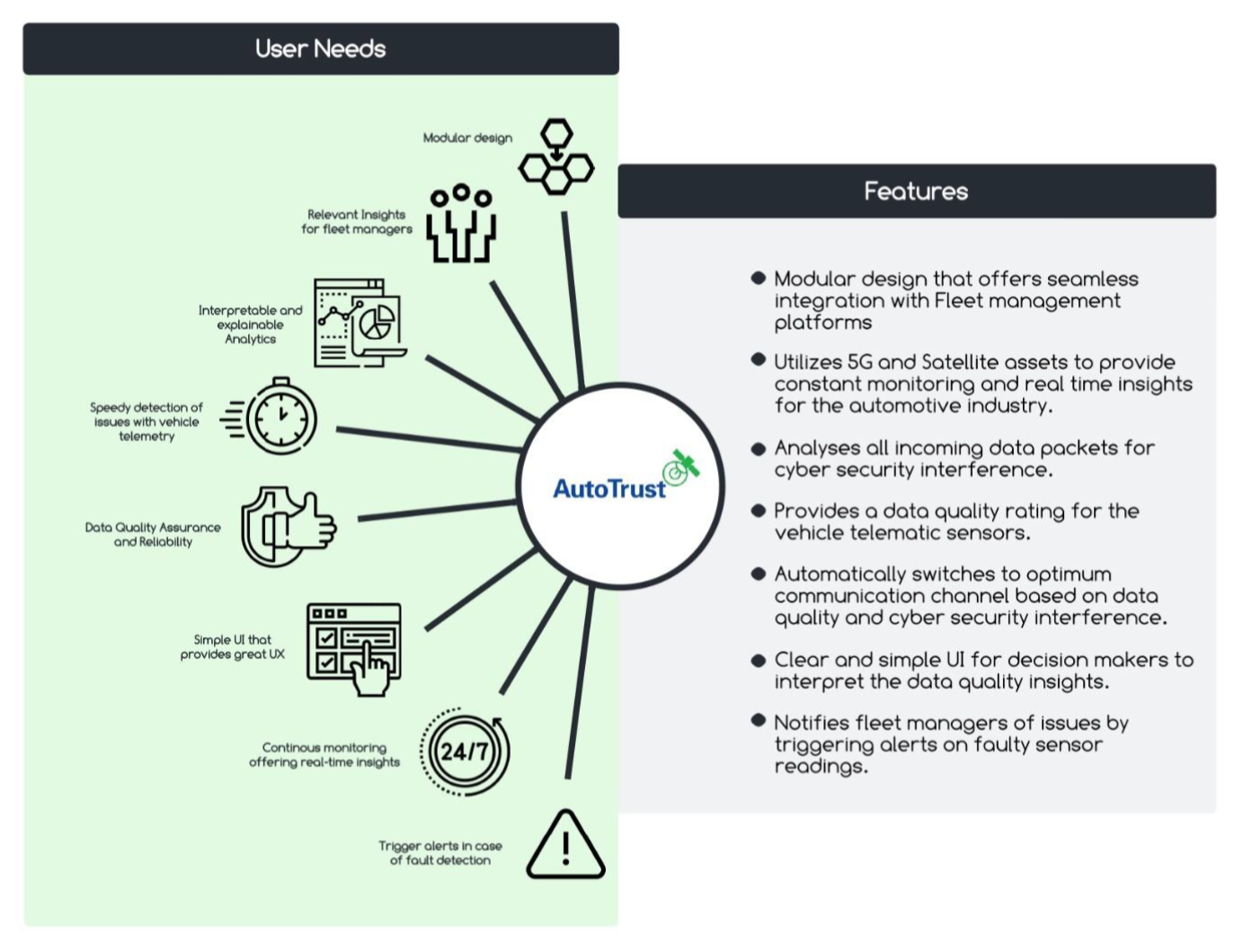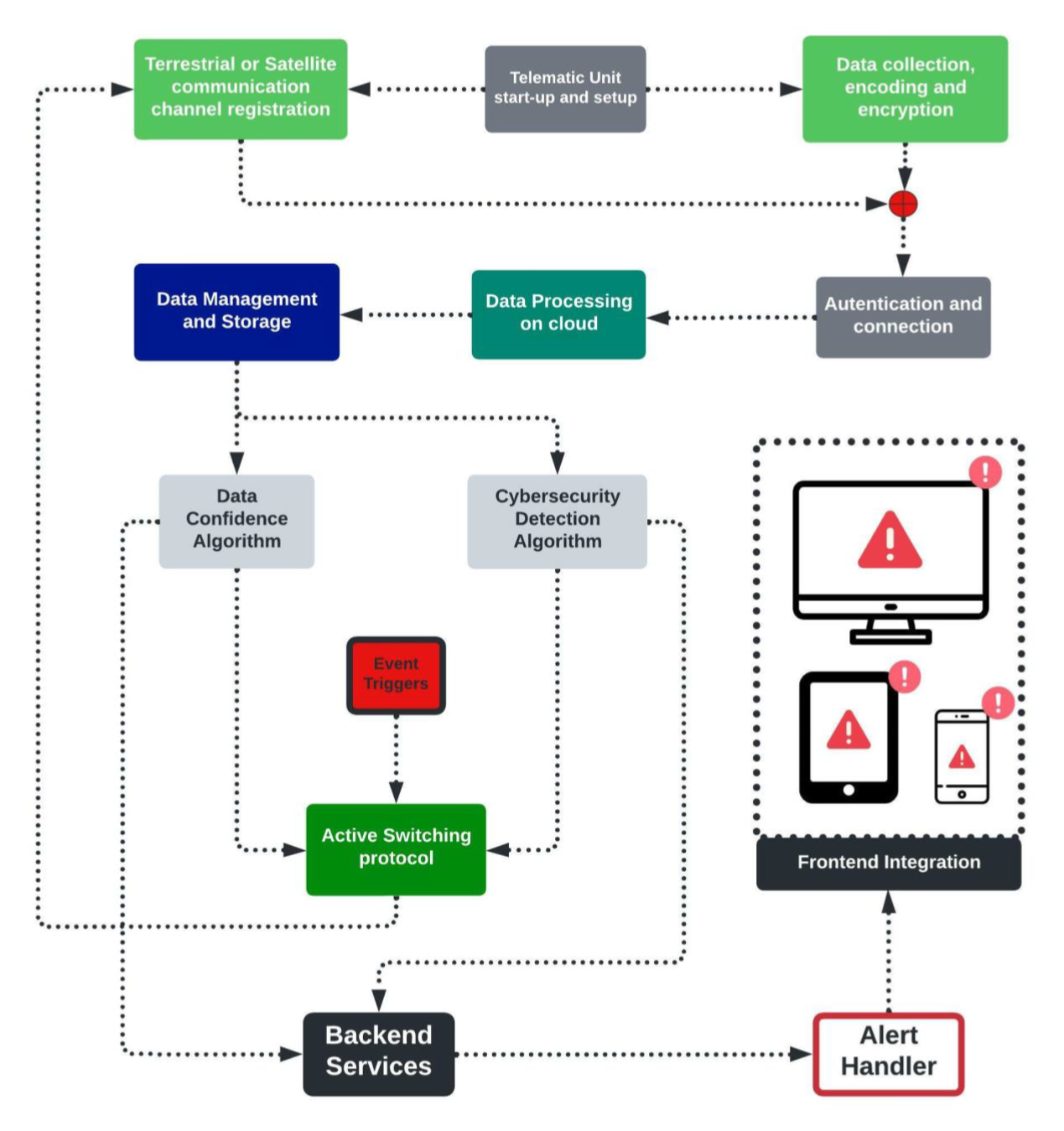
Objectives of the service

In transport and logistics, data analytics is increasingly relied on for making critical decisions. From today’s connected vehicles – fleet managers expect to receive accurate and continuous data. But how do they identify whether telematic data flow has suffered an adversarial cyber-attack? or the vehicle’s sensors are malfunctioning?
This consortium is developing AutoTrust - a cloud-based data analytics tool that has been designed to check the data quality from any connected vehicle and provide an assessment as to whether there has been cyber-attack interference or whether some sensors are reporting inaccurate information. AutoTrust uses the union of continuous monitoring enabled by the integrated 5G and SatCom connectivity and powerful Artificial Intelligence (AI) to deliver a confidence rating on vehicle dataflow.
Users and their needs

Tire Pressure Monitoring System (TPMS) are used widely in the automotive industry. They include Temperature and Pressure sensors tracking tyres conditions on roads. These sensors are installed by large fleets to identify underperforming tyres. Once an alert is triggered, fleet managers can schedule corrective or preventative maintenance. This can reduce vehicle downtime leading to an efficiently operating fleet.
TPMS sensors operate in a harsh environment and can therefore malfunction leading to a drop in data quality. Fleet management platforms can also experience interference in the form of adversarial attacks. The project aims to address these issues by providing data quality metrics to fleet managers for more insightful decision making. The initial target market are fleets operating Heavy Goods Vehicles (HGVs) in Europe.
Service/ system concept

The system comprises of several modules that are handing the sensor data ingest, transfer, processing and storage. The core subcomponents of the AutoTrust system are:
-
Adversarial cyberattack detection
-
Data confidence analytics
-
Active Switching Protocol
The analytic modules process the tyre temperature, pressure and GPS trace to output the cybersecurity alert flag and the data confidence rating. These outputs provide guidance to the embedded active switching protocol to transfer to the optimum data flow channel. The results of the analytics are displayed on the platform frontend to the user for informed decision making. The user can also rely on a steadier stream of data utilizing both terrestrial and satellite assets.
Current Status

The project began in October 2021 with the Kick-off meeting launching the activities. Currently the Baseline Design Review (BDR) is in progress. The user requirements and the product scope has been finalised after engagement with stakeholders. Three industrial partners have been identified to participate in the demonstration phase of the project for the technology readiness evaluation. The procurement of the 5G and SatCom units has started for the testing activities with initial field trials launching in July.
The adversarial cybersecurity detection module, the data confidence algorithm and the active switching protocol are iteratively being developed. The data processing and feature extraction for the two analytic modules are ongoing. The components of the machine learning pipeline are being selected and evaluated for optimum performance.
The BDR milestone is expected to be completed on 21.06.2022.
Prime Contractor(s)
Subcontractor(s)





